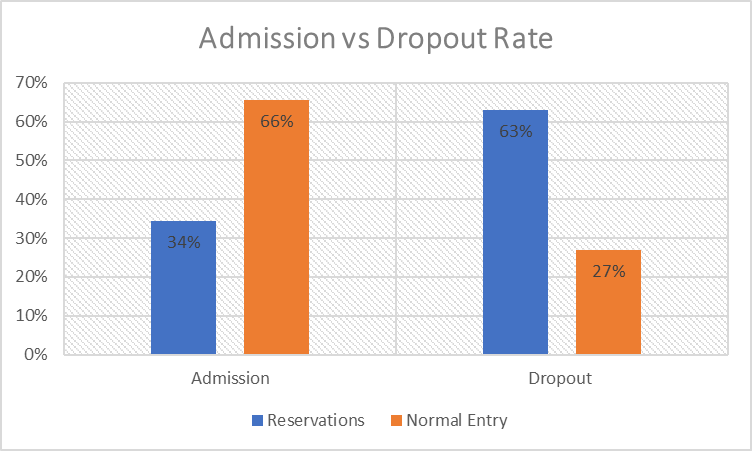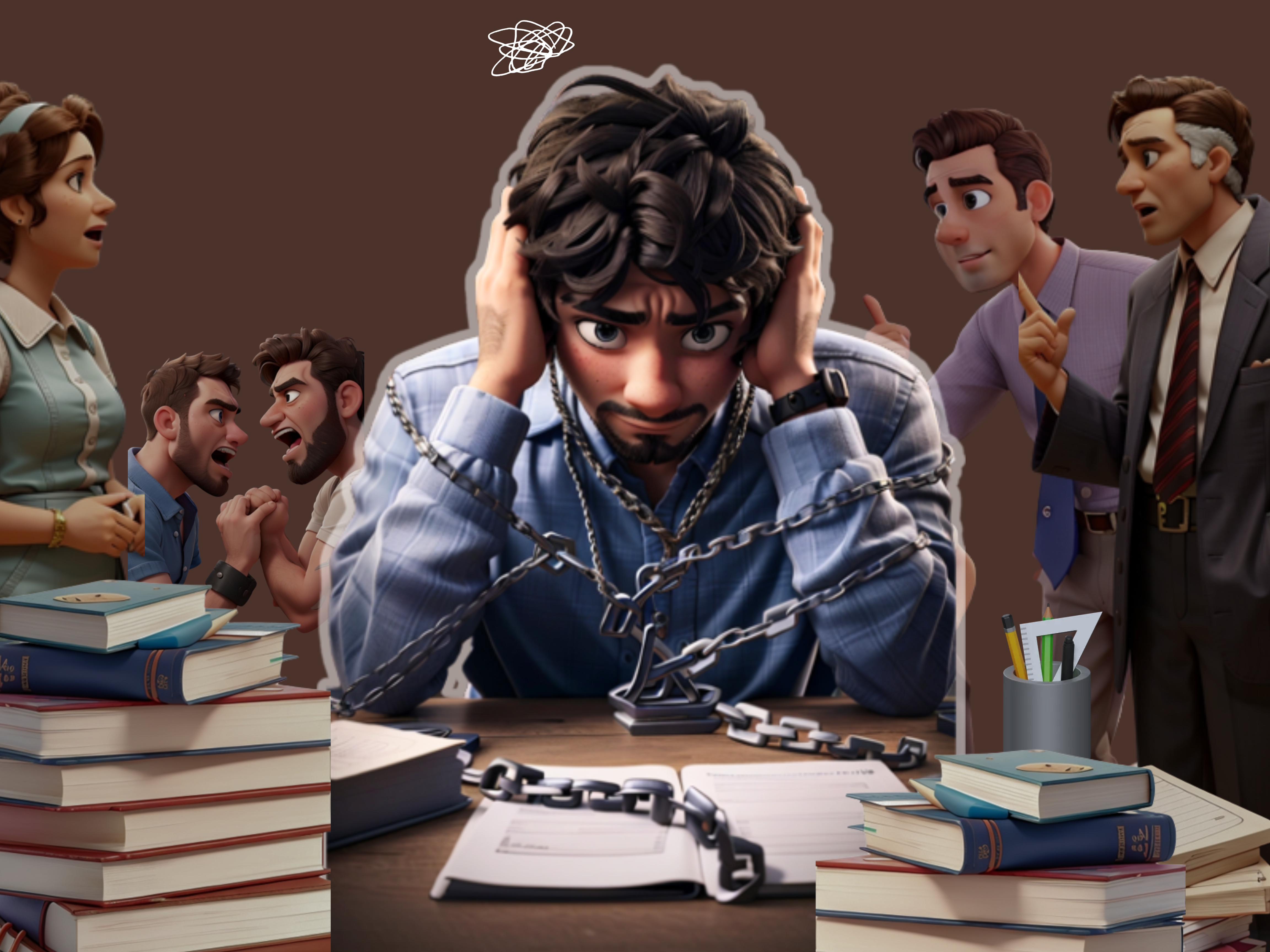In the competitive landscape of Indian education, dreams of prestigious universities can turn into nightmares. In this article we ask: why are student suicides and dropouts on the rise, especially within esteemed institutions like IITs? What hurdles do marginalized students face in this pursuit of education? Isn’t it time we reevaluate the admissions process, moving beyond rigid exam-based evaluations, to ensure fairness and equity?
Recently in Kota, a city renowned as a hub for India’s aspiring engineers, doctors, and civil servants, we regrettably observed the loss of two more young lives. Avishkar Shubhangi, who was preparing for the NEET medical entrance exam, and Adarsh, a student from Bihar, have now become part of the unsettling statistic of 23 suicides in 2023 in just the first 6 months. (Source: NDTV). In the highly competitive world of the NEET and IIT JEE examinations in India, the probability of success is low, with typically <3% of the applicants being offered a place in the government colleges and even lesser if one aims for the top tier ones. As seen by this statistic, the preparation for the examinations is itself stressful, with some taking the extreme step of taking their own lives. But what about the ones who succeed? Surely their lives are now on the path to career glory?
Unfortunately, contrary to what many students and parents may believe, getting a place in these institutions is just the beginning. Many students are dissatisfied after achieving what they thought was their dream outcome. This is especially true for the reservation quota candidates. While only 34% of the total admissions in the prestigious IITs are from the reservation quotas (the actual number is lower than the policy mandated number of 49.5%, which is broken up into 15% SC, 7.5% ST and 27% OBC), 63% of the dropouts came from this category. For the SC / ST this figure is even more stark with 40% of all dropouts coming from this category. Some IITs even reported dropout rates as high as 72% among SC/ST students (Source: Department of education 2020 for the years 2015 to 2019).

The IIT Council, the governing body of the institutes, has suggested that family issues, problems in adjusting to the high-pressure environment and lack of support from peers could be some of the reasons for the dropouts. Furthermore, since their entrance criteria is lower, reservation candidates often find it difficult to cope with the programme which induces stress.
In the medical field as well, a significant proportion of students do not seem to be happy. A recent RTI (Right to Information) reply from the National Medical Commission has revealed that a total of 119 students have died by suicide in the past five years. A survey conducted among 1,000 medical students representing 70 institutions throughout India has shown that a significant proportion of these students considered discontinuing their studies, and many of them experienced either physical or mental challenges during their coursework. Nearly 43% said they felt the urge to drop out of the course and more than 11% of students also said they began drinking and smoking during the initial two years, due to the high stress environment. (Source: Deccan Herald https://www.deccanherald.com/india/karnataka/nearly-50-of-mbbs-students-want-to-opt-out-midway-831168.html )
According to another report by M3 India, from a satisfaction perspective, only 15% of young Indian doctors, between the ages 20-29 are satisfied with their jobs. Compare this to the same age demographic in the US, where 70% are satisfied.
So, what can be done to improve the levels of satisfaction and reduce the dropout rates in these institutions? One main area we need to look at is the process of selection of the candidates. In India, the only criterion used is a standardized test such as NEET or JEE. However, these do not assess other equally critical aspects for achieving success in these colleges or for that matter in any course. There are three important dimensions which need to be evaluated: interest, motivation and skill.
Many students in India are compelled to take exams like NEET and JEE due to intense societal pressure and the perception of prestige associated with these exams and professions. It is only later, after these students join their respective courses, that they find out that their motivations or interests do not align with the course they have worked so hard to get into.
One way to address this is to change the admissions process to a more holistic one. We have seen that in the UK and the USA, universities have a range of tools besides standardized exams to assess applicants thoroughly. Holistic admissions consider academic records, extracurriculars, leadership, and personal statements, offering a well-rounded view of applicants. Interviews, recommendation letters, and portfolios evaluate their skills and passion. For example, an aspiring medical student in the UK must have done an internship or spent time in a care-giving environment during the school years to qualify to apply for a medical programme.
Schools can also play an active role in educating children about the various career paths available to them. This guidance should encompass diverse fields and encourage students to pursue careers that align with their passions and strengths rather than succumbing to societal pressures. A well-rounded education that nurtures individual talents and interests can lead to a society with a broader range of skills and expertise, not only helping students but ultimately benefiting the entire nation.
Shivi Vikram – AS Level, CS International.
Cover Illustration – Shri Sanjith – Grade 10, CS Academy.


